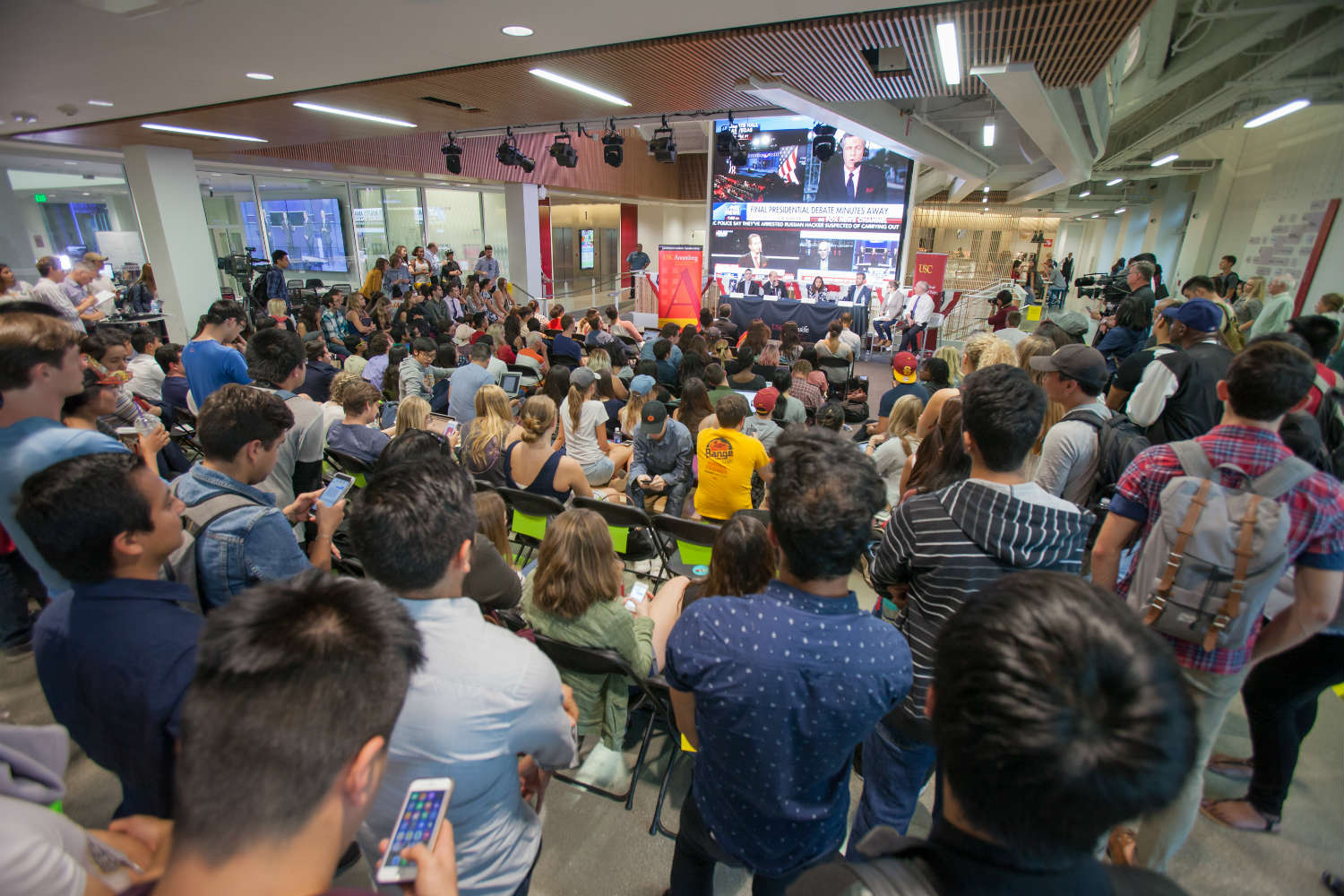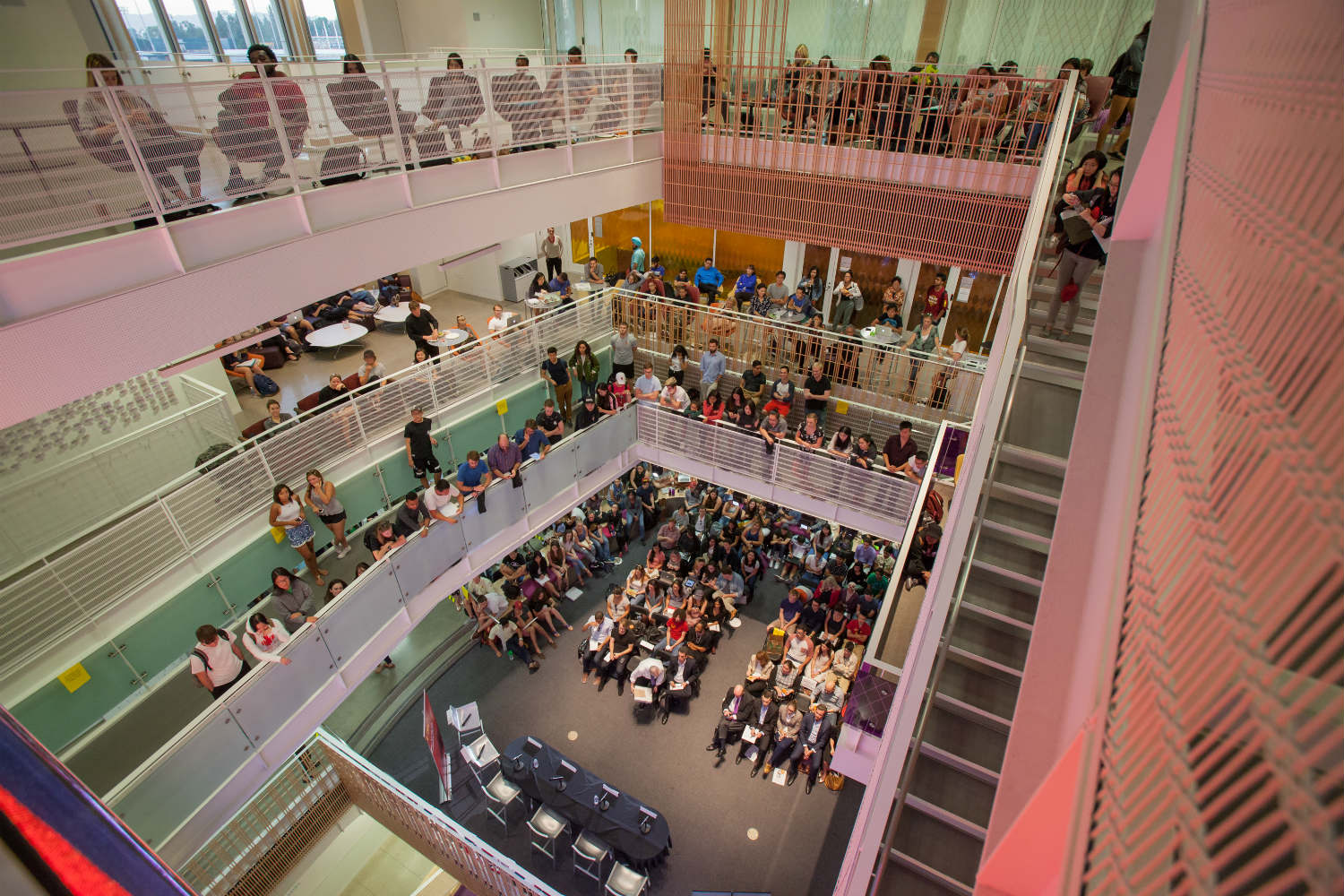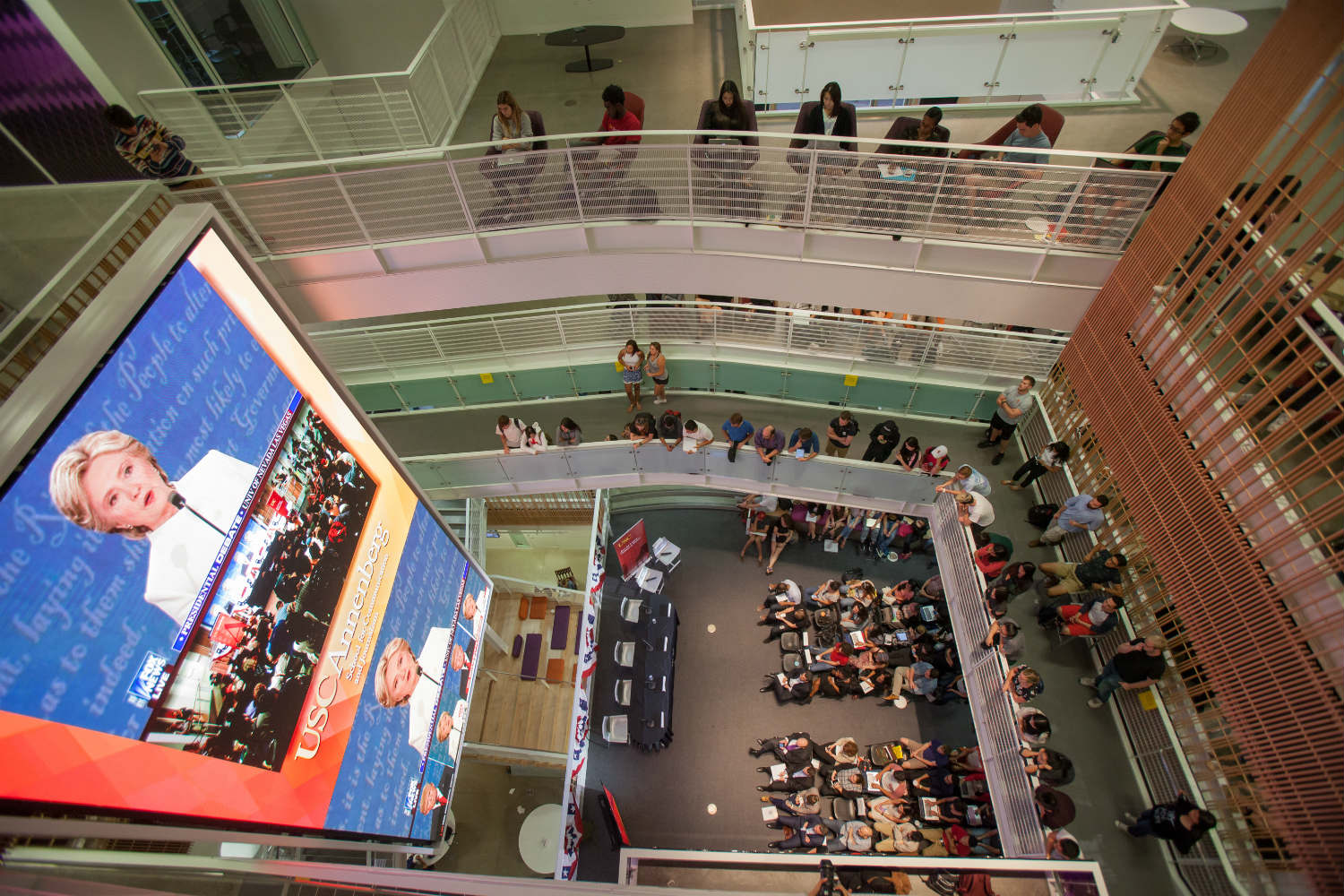Project Description
Overview
The University of Southern California’s Wallis Annenberg Hall in Los Angeles is a $150 million building dedicated to media education, communication and production. Completed in 2014, the 88,000 sq. ft. structure is distinguished by a dramatic 360° ‘converged media’ center, outfitted with a circular ‘assignment desk’ which is crowned by a media ‘halo’ of digital screens that provide a live news stream across multiple platforms. The four-story, 61 ft. high, skylighted atrium provides a birds eye view of proceedings for three balconies designed to accommodate overflow crowds from the 300+ open seating lobby.
Program
Although equipped with an abundance of high tech digital technology, the striking 21st Century news center was never equipped with a system to disseminate clear audio. Problems of excessive reverberation time and related issues were exacerbated by the necessity to employ rental speakers units for large assemblies. WSDG project manager Joshua Morris and David Kotch of Criterion Acoustics performed a series of field reverberation time evaluations of the asymmetrical environment, which had proved challenging to speaker placement and coverage.
Design
WSDG determined the atrium required uniform coverage to support the varied programming presented in the hall. However, many ‘architectural obstacles’ such as columns, stairs and railings, presented an irregular site; these elements combined with the need for the audio system to be ‘invisible’ led to a fully distributed L-Acoustics Speaker System being permanently installed to provide the consistent coverage necessary to insure optimal speech intelligibility and communication propagation – a symmetrical approach to an asymmetrical space drawing from the gestalt of the large LED screen. This reinforcement system was then augmented by custom-designed acoustic wall treatments installed throughout the atrium, designed in a way meld with the existing aesthetic. Once implemented, speech intelligibility throughout the atrium and balcony levels improved dramatically. The installation has also proven cost and time-effective, as it was programmed with easy to use presets for any level of operator training and eliminated the need to set up and break down rental systems.





